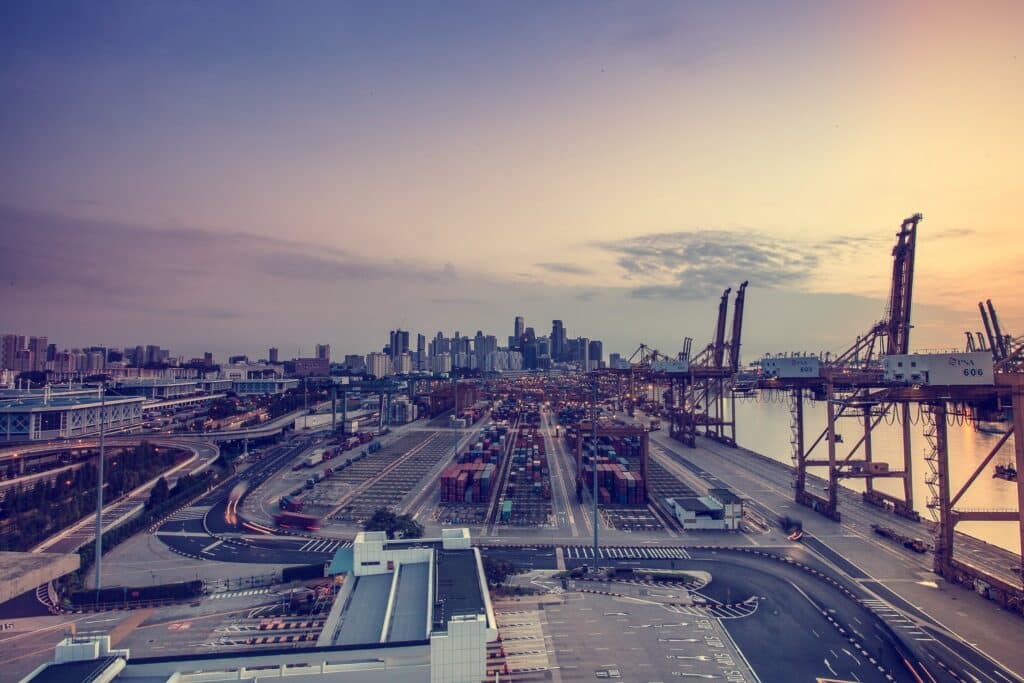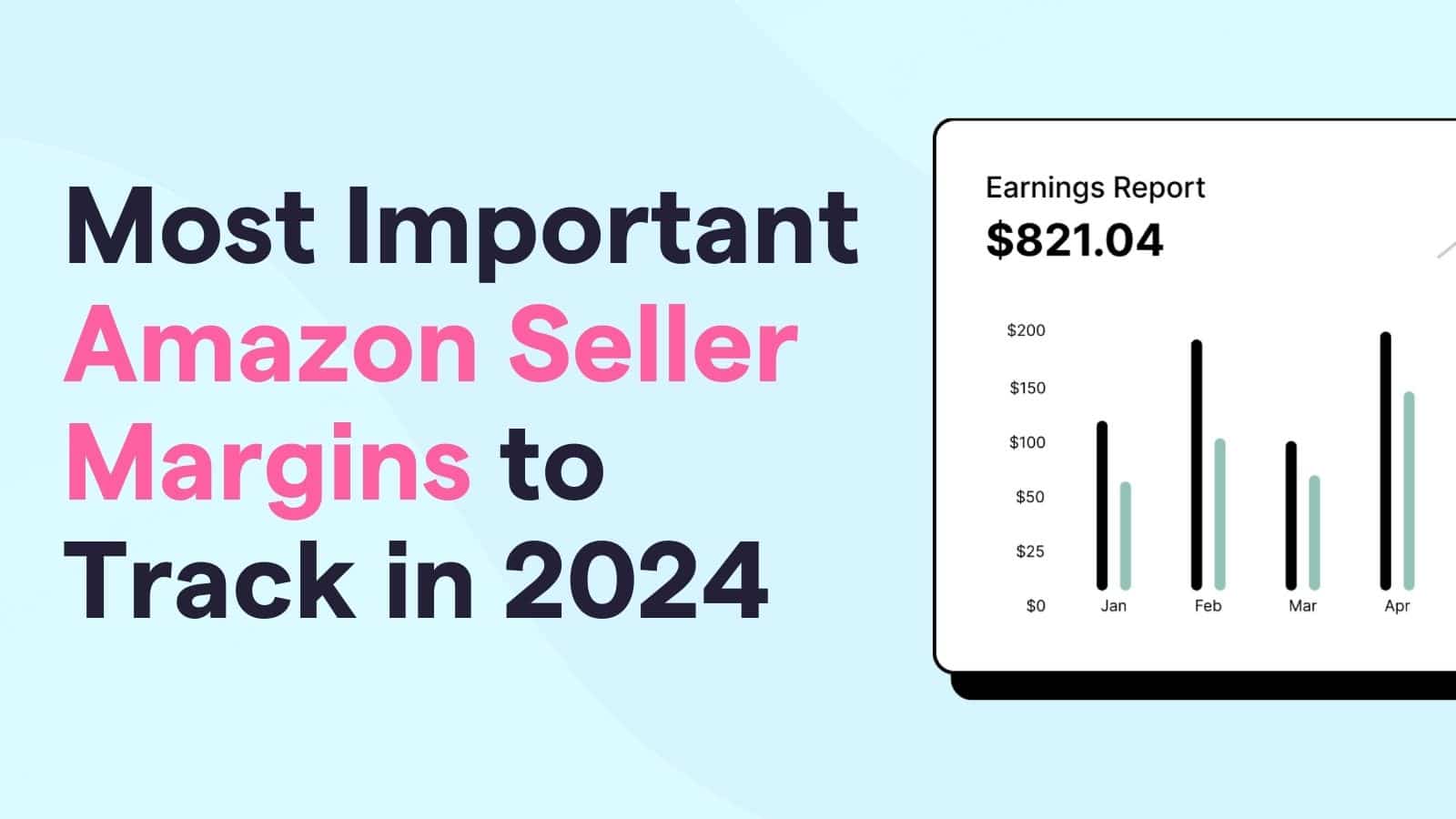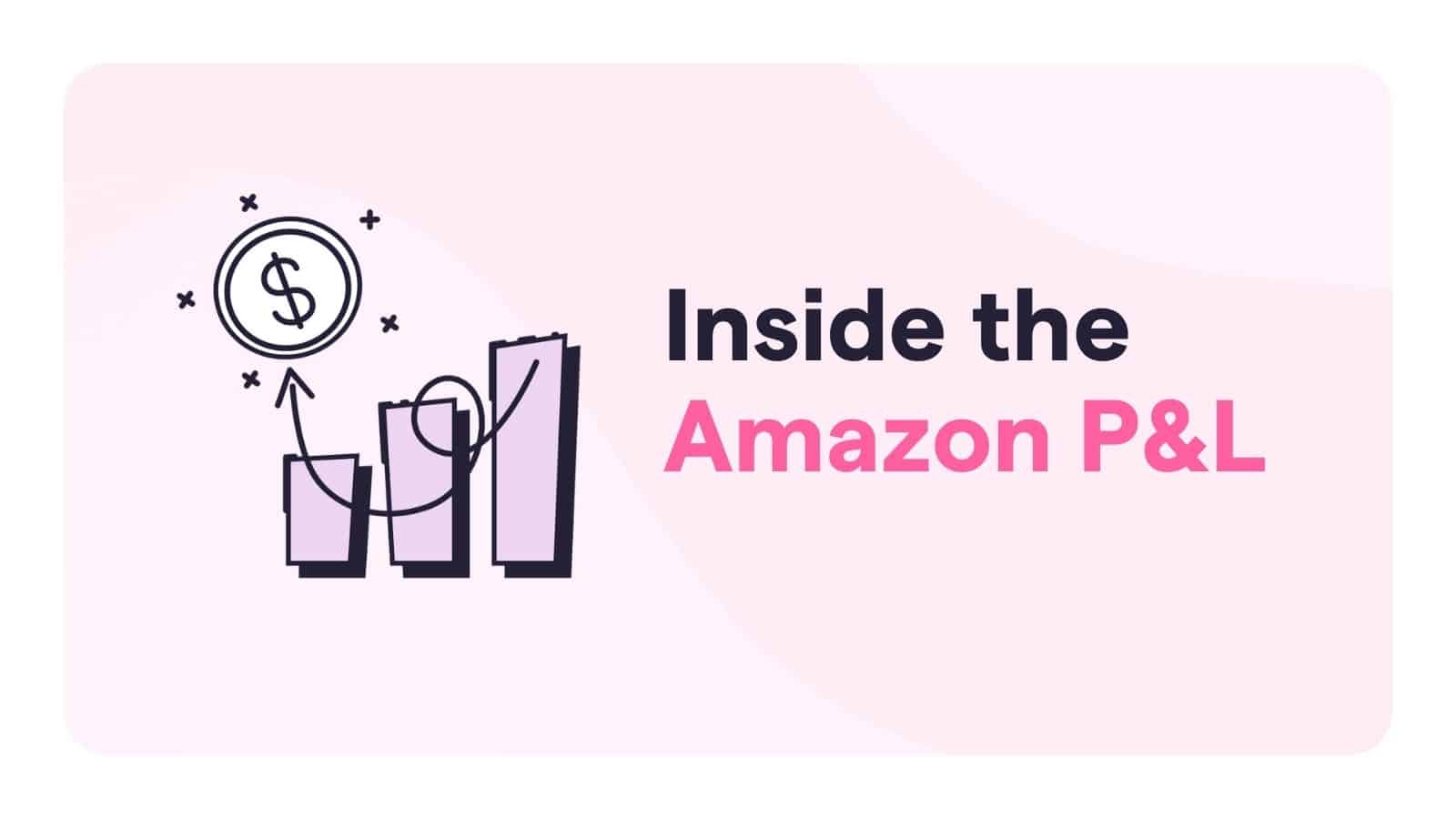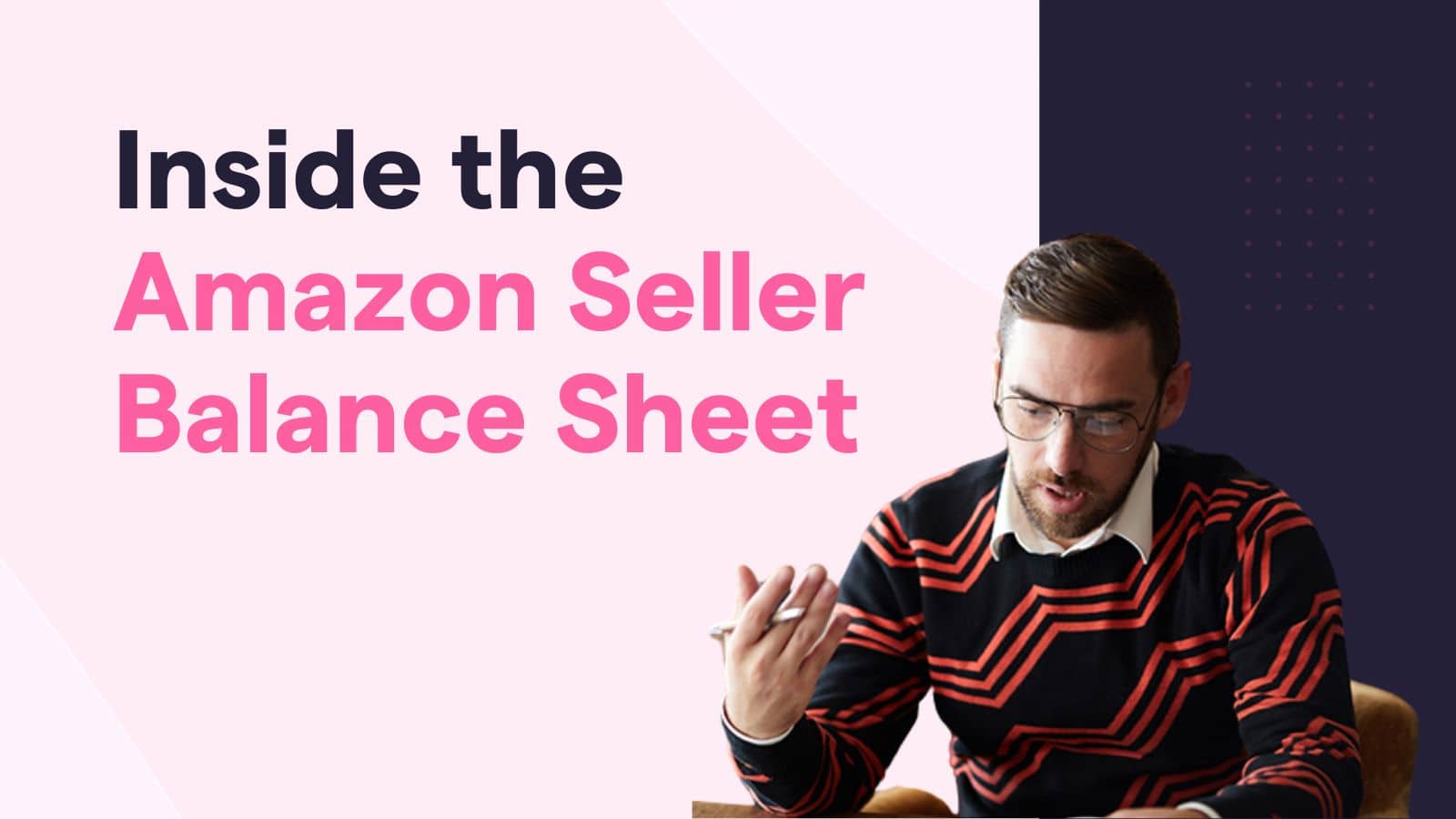Welcome to the complex and wonderful world of international commerce. Prior to reading our definitive guide on how to ship from China to Amazon FBA, you may or may not have experience with importing products – so we have broken it down into the basics whilst covering the most important details in more depth throughout the following chapters.
There are three main ways to sell products on Amazon – retail arbitrage, reselling (retail merchant) and private labelling (developing your own brand). More information about these types of sellers can be found in our becoming an Amazon FBA seller guide.
If you are building your own brand through private labelling or creating new products, there is a high likelihood that you will be importing products from China. Throughout this guide, we take a look at international logistics and importing through the lens of a private labeller’s needs. However, if you are importing branded products or otherwise from any country, most of the content below will still be relevant.
Table of contents:
- Terminology
- The Supply Chain
- Quality Control
- Methods of Delivery
- Amazon FBA Shipping Calculators
- Should I use a Freight Forwarder?
- Customs & Compliance
- Getting your products into FBA warehouses
Terminology
International logistics is one of those industries where it’s easy to slip terminology and jargon into discussions. However, the meaning of all these different terms can become quite confusing if you aren’t familiar with their meanings. Here’s a quick run-down on some of the most common acronyms and other abbreviations.
Shipping ‘incoterms’
“Incoterms are a set of rules which define the responsibilities of sellers and buyers for the delivery of goods under sales contracts.”
EXW stands for ‘ex-works’, which means that the supplier produces the goods and the buyer handles everything from the time it leaves the factory door to the end destination. In other words, EXW means that you are entirely responsible for all costs involved with import and delivery.
FOB is short for ‘free on board’ – the supplier gets your order to the port of export and you handle it from there. In the case of Amazon FBA inbound shipping from China, the seller would get your order to the nearest Chinese port, where your freight forwarder would arrange for onward carriage.
CFR or ‘cost and freight’ means that the seller’s price includes all fees to get the goods to the destination port. Local delivery, duties and taxes are the responsibility of the buyer.
CIF refers to ‘cost, insurance and freight’, which is the same as CFR, except the supplier also insures the shipment during transit.
DAP means ‘delivery at place’ – in other words, the buyer only pays for local duties and taxes.
DDP stands for ‘delivery duty paid’, which basically means that the supplier’s price covers everything including local duties. If you’re sending orders over $800USD directly into FBA warehouses, you’ll want to select this option, if possible.
There are other incoterms which are used for various arrangements. However, the ones listed above are the most common ones that you’re likely to encounter as an Amazon seller. Check out this resource for more information.
Types of warehousing
FBA is short for ‘Fulfilment by Amazon’, as you’re probably already aware.
3PL is a generic name that identifies a ‘third party logistics’ service. Amazon’s FBA offering is a branded 3PL service. However, there are plenty more contract warehouses available.
Prep warehouses are a relatively new type of warehousing/logistics service that has become more prominent as a result of FBA sellers. These facilities act as a physical unloading point for cargo from China. Their job is to inspect the products for damage and faults, prepare stock for FBA and forward your inventory to the relevant warehouses.
Shipment quantities:
FCL stands for ‘full container load’, which refers to a full 20, 40 or 45 foot container. There are also 10 foot containers available, however they are not very common. As a general rule of thumb, if you’re sending 18 cubic metres of product or more, shipping via FCL may be in your best interests.
LCL is short for ‘less than a container load’. If you are sending goods via ocean freight, but your order isn’t large enough to occupy a full container, it will be consolidated with other goods and sent together in a mixed container. Minimum quantities for LCL tend to start at 2-3 cubic metres.
FTL refers to ‘full truck load’, and LTL is short for ‘less than a truck load’. These delivery quantities are used for domestic delivery (i.e: from your prep warehouse/3PL into FBA).
SPD is another name for ‘small parcel delivery’, which is generally a quantity that can fit on a courier service (i.e: a couple of boxes).
CBM stands for ‘cubic metre’.
Common documents used in international logistics
Proforma invoice: this is the international equivalent of a quote, which generally includes:
- Details of the buyer and seller.
- Description of the goods.
- HS code (this is a widely accepted system that customs and border control uses to classify goods, ensure that imports are taxed at the right rate and that they meet all compliance requirements).
- The price.
- Incoterms that relate to the shipment.
- Delivery details including how and where the goods will be delivered, and how much that will cost.
- Currency used in the quote.
Commercial invoice: just like any other invoice, this is the actual documentation that records the transaction. Commercial invoices are used to determine the value at customs, and are in many ways an ‘official’ version of the proforma invoice.
Packing list: includes details about the items being delivered, their net and gross weights, dimensions of the packages, any particular markings on the packages that can be used to identify what is contained in each box, and any special instructions. Packing lists are used by freight forwarders to create the bill of lading, and by customs officials to identify the location of certain packed items they want to examine.
Certificate(s) of origin: as the name suggests, certificates of origin identify which country the goods originated in.
Bill of entry: this is a declaration of the exact nature, quantity and value of the goods being transported. These documents are prepared by customs brokers, and examined by customs authorities to ensure that it is accurate and conforms with the local tariffs and regulations.
Bill of lading: “A bill of lading serves different purposes. First, it is a contract for the carriage of goods between the shipper and the transportation company. Second, it serves as a receipt issued by the carrier upon taking possession of the goods. Third, it may serve as a document of title that permits its holder to obtain title to, and possession of, the goods. These transport documents expedite an export shipment from the time of departure from your facility to delivery. When freight changes hands from the shipper to the carrier, it is the signature on the bill of lading that signifies that the goods have been received in “good order.”” – more information here.
The Supply Chain
Once a supply arrangement is established between a factory in China and an FBA seller in the United States, the supply chain normally goes something like this:
1. Seller places order with factory in China and pays on terms as agreed.
2. Factory produces goods, attaches labels and packages securely.
3. Courier or freight company collects order and transports it through their network to destination port in America.
4. Duties are paid, certifications often checked and customs clears goods for passage to their destination.
5. Products are generally inspected and/or prepared in a 3PL or prep warehouse.
6. Goods are then sent to various FBA warehouses as instructed by Amazon.
Of course, there is more to it than that and every supply chain is different in one way or another. However, from a high level perspective, that’s what happens when you order products from a factory in China and send them to FBA.
In this section, we cover a few tips and tricks to keep in mind at each stage.
Step 1: ordering products from your supplier
If this is your first time doing business with the factory, make sure to ask to see your supplier’s certifications (if they are required for your product category) and ensure that they are the correct ones for your market.
Always negotiate payment terms – if the products are being made to order, manufacturers will normally require a 30-50% deposit, and the remainder before the products leave China (often with a bill of lading).
When you’re planning out the development and introduction of new products, make sure that your timeframe expectations are realistic and plan accordingly. New products and ‘made to order’ runs often take 30-45 days to produce – sometimes longer. During peak season, expect further delays. The best way to gain an accurate measure of lead times is to ask your supplier and add in an extra allowance for unexpected delays.
For more tips on finding suppliers, negotiating and ordering, check out our guide on how to become an Amazon FBA seller.
Step 2: production and packaging
Once the factory receives your deposit or payment, they will produce the order, attach labels as required (many sellers get their suppliers to attach Amazon’s internal FNSKU barcodes to save money) and securely packages up your order ready for shipment.
At this stage, it is a good idea to have quality control measures in place – whether that is simply your supplier sending through photographs or engaging an independent product inspection company, this step is critical.
Not only does quality control help to prevent substandard stock from being sent to FBA, but it also serves as evidence of who is at fault if any damage happens during transit.
Here are a couple of blogs that take a detailed look at the best Chinese inspection companies for FBA sellers:
Some Amazon sellers don’t bother getting their products inspected before leaving China, and haven’t had any issues. However, if things do go wrong, the liability normally sits with the buyer.
Step 3: delivery to the United States of America
Depending on the size/value of your order, urgency of receiving goods and margins available to absorb freight costs, you will either have your goods delivered via express courier, air freight or sea freight. We cover the ins and outs of each option in more detail in the next section. For sellers in Europe, there is also the option of delivery via train.
Transit times can take anywhere from 2 to 45 business days, depending on the method of transport and where in the United States your shipment is going.
It is a good idea to consider purchasing freight insurance to provide cover for the risk of the unexpected happening.
Step 4: getting through customs
If your order is being delivered via express courier and has a declared value of less than US$800, this will normally get through customs with no issues. For air and ocean freight, they always go through customs.
The easiest way to get through customs hassle free is to work with a freight forwarder and provide all the relevant information up front. It costs a bit more than doing it yourself, but will make your life much easier as a result.
If you decide to DIY, make sure to have all your ducks in a row to prevent costly delays at the border.
Step 5: quality control and storage
Whilst some merchants send their products directly to FBA, it is not all that common, and generally advised to include some kind of local inspection before sending stock into Amazon’s warehouses.
It only takes a handful of poor reviews and damaged or faulty orders for your account to either be suspended or struggle to win the buy box. Either way, great business performance is somewhat dependent upon receiving first grade products in FBA.
Smaller sellers often have orders sent directly to their home address and inspect goods themselves first. For a more scalable solution, consider looking at prep warehouses.
Once your products have been checked and prepared, it’s time to get them into FBA.
Step 6: Send to FBA Warehouses
When you create a shipping plan in Seller Central, Amazon will instruct you where to send the goods. This is often spread across warehouses in multiple states.
By sending your products to a prep or 3PL warehouse first, you gain the advantage of Amazon’s preferred carrier rates which is cheaper than sending directly at retail rates.
Quality Control: what are your options?
Once your order arrives in America, there are a few ways that you can get your goods into FBA – send it directly with no quality measures in place, send it to your home and check the goods yourself, send it to a prep warehouse or store in a 3PL facility until required by FBA.
Sending orders direct from China into FBA:
- Pros: it’s the cheapest and fastest method of delivery, and involves less people handling your goods.
- Cons: suppliers know your market strategy and can easily become a competitor, no quality control measures to prevent damaged/defective stock from entering FBA, orders can only be sent to one warehouse (Amazon can move products around their network on your behalf, but it costs) and if there is any damage, it’s harder to determine who is at fault.
- Tips: use a Chinese inspection service to prevent faulty products from getting through, don’t make final payment until the products pass a local inspection, negotiate with your supplier to cover the cost of a second inspections if the first one fails, and make sure to get photos from your supplier before dispatching stock.
Personally inspecting stock before delivering to FBA:
- Pros: ability to take advantage of Amazon’s partnered carrier arrangements, no cost of prep warehouses, ability to inspect/repair products in-house, and gives you a good feel for what to expect from suppliers.
- Cons: you pay for delivery twice, it’s not all that practical for larger volumes and means that you have to stay in the same location when waiting to receive orders (no globetrotting, sorry).
- Tips: when inspecting your products, try to learn how they are assembled and their inner workings (where relevant). This way, you can potentially repair damaged units if necessary, and can tell customers about your product with much more confidence.
Send your orders to a prep warehouse:
- Pros: quality control measures in place, if something goes wrong, you have more recourse, it’s scalable and allows you to take advantage of Amazon partnered carriers without needing to physically handle the goods.
- Cons: prep warehouses are the most expensive option and they add further delays which can be critical in peak season.
- Tips: work with an FBA specialist prep warehouse, find out whether they have a network of facilities or just the one and if they have experience with your types of products.
Send your orders to a 3PL facility:
- Pros: cheap storage, can receive orders directly from China and is a good way of keeping warehousing costs down by just keeping as much stock in FBA as you need and replenishing regularly, many 3PLs offer prep services, and are often located close to ports and major cities.
- Cons: not necessarily equipped for prep services, slower than sending direct, and more expensive than doing it yourself (or not at all).
- Tips: work with good quality contractors. After all, they are handling your business assets. Make sure that you are aware of all the costs up front to avoid a surprise down the track.
- Fees: below, you will find an example of a typical price sheet for 3PL and prep services, provided by the team at eCom Crew:
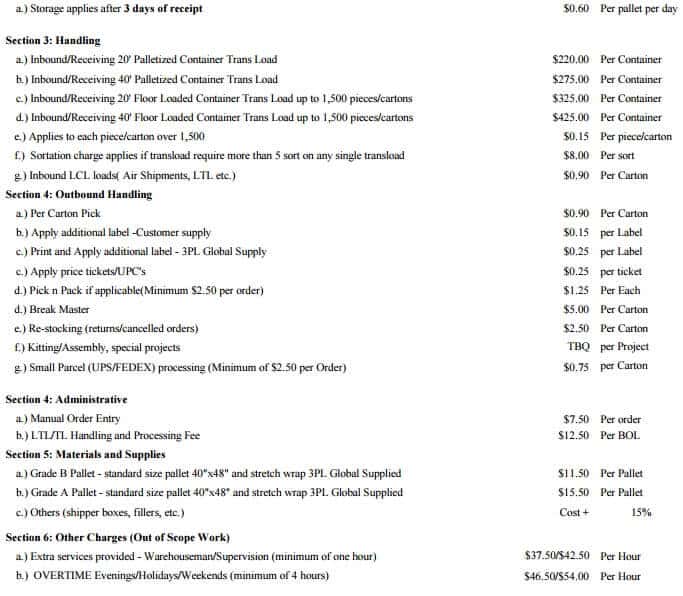
Methods of delivery
There are a few different ways of getting your goods from China into local FBA warehouses. Whilst there is no ‘one size fits all’ formula for deciding which freight type to use, the main factors that are likely to influence your decision are the value, size and urgency or your order.
For Amazon FBA sellers in the United States, the three most common methods of delivery are: express courier, airfreight and ocean freight. Sellers in European marketplaces also have access to train as an alternative delivery method.
Express couriers:
For smaller parcels such as samples and initial test orders, express couriers are a great way of quickly receiving goods and testing the market. This delivery method reduces the delays and allows you to seize opportunities quickly. Many new sellers begin their journey into sourcing by placing all orders through express courier.
Whilst the Amazon FBA inbound shipping cost is higher, this option is much simpler than other types of freight, as the entire inbound delivery process is managed by the courier service provider. Just remember, what you save in delays, you will pay in higher delivery fees.
Express couriers operate on a DDU basis – where all delivery costs except for local duties and tariffs are covered in the freight fee. For orders under $800USD, there is no customs duty on imports into America.
This guide recommends using couriers for orders under 1000lb, then moving to air or sea freight on larger consignments. However, you may decide to send goods via the ocean for smaller quantities if there is no major rush to receive the shipment.
Air Freight
If time is of the essence, but your order is too large to place on a courier, airfreight is a great way to receive your goods quickly. Generally, the lead time on this service is the same as express couriers. However, it can be a few days slower depending on which flight the cargo is put on.
Pricing on airfreight can get quite complex, and whilst it is possible to organize it yourself, you are generally better off working with a freight forwarder.
“The unit price of air freight can be very confusing as there are lots of costs involved in it. You have to consider the import and export fees in both China and the USA, the land transportation fees in both China and the USA. and possible communications, to name a few.”
Airfreight prices are calculated based on the larger of dimensional weight and actual weight. The following formula is used to work out the dimensional weight of your cargo (note that the calculation is different for sea freight):
Dimensional weight = (length x width x height in cm)/6000
If you decide to send your order via airfreight, make sure to work with a good freight forwarder, as this can make all the difference between having a great experience or a nightmare.
Before confirming delivery with a freight forwarder, it is always prudent to confirm very clearly that the price quoted includes all necessary charges and if it doesn’t, understanding what is excluded.
Ocean Freight
“Sea freight is one of the most complicated methods of transport for import and export”
Sea freight involves large cargo ships moving vast amounts of resources between continents in standardized shipping containers. If you are ordering quantities that are 2-3 cubic metres or more and you don’t need it in a hurry, then ocean freight is often the best way to go.
If your shipment is 18CBM or more, it is generally best to put the entire order into one container (FCL). Conversely, if your order is not large enough to fill an entire container, the freight forwarder will consolidate your cargo with other shipments to fill a container (LCL). This way, you are able to gain the cost savings of ocean freight without needing to move large volumes of product.
Generally, sea freight from China to the United States takes around 30-45 days – depending on where you are located. However, expect to have considerable delays during peak seasons such as the lead up to Christmas and Chinese New Year. During holiday periods, it is important to plan in advance and allow extra time for shipments to arrive.
The cost of sea freight is much cheaper than moving products via aeroplanes, and considerably better for the environment. Unlike air freight, prices for ocean shipping are calculated based on the dimensional weight, with some restrictions on maximum allowable weight per container (rather than the larger of dimensional or actual weight).
The following calculation is used to determine the dimensional weight of your shipment for ocean freight purposes:
Dimensional weight = (length x width x height in cm)/5000
The process of getting your goods from A to B is actually handled by 2 freight forwarders – one in the origin country (China) and one in the destination country (America). This is important because whilst your local freight forwarder will have a detailed understanding of domestic regulations, they cannot be expected to know the rules surrounding every other country of export.
Freight forwarders tend to have a wide range of partnerships and networks throughout the world, which means that you don’t need to search for a freight forwarder in every destination – just make sure that you work with a good quality local partner and they should be able to handle it on your behalf.
Amazon FBA shipping calculators
Amazon seller shipping rates can vary considerably, based on a range of factors such as those mentioned above. This section is intended to help you gain a rough estimate of the freight costs associated with importing a new product into FBA, for the purpose of determining whether it is profitable.
Of course, as sales increase and you begin holding more stock, it makes sense to shift to more economical delivery methods such as sea freight instead of couriers.
Steps to calculating Amazon FBA inbound shipping costs:
- Decide which transport method you are using.
- Navigate to the relevant shipping calculator below.
- Enter your pickup and delivery addresses, weight and other relevant details.
- Get your price estimate.
Or alternatively, if you are already working with a good customs broker, it can be easier to simply ask for a quote and let them do the work of calculating prices.
Calculators for express courier:
Calculators for sea and airfreight:
Should I use a Freight Forwarder?
In general, it is cheaper to manage international shipping yourself. However, is that really the best use of your time?
For couriers and small orders, it is easy to sort this out in-house, and simple enough to understand what you’re doing. However, for shipments larger than just a few boxes, it is very useful to be able to turn to a freight forwarder.
You don’t want to spend your days sitting on the phone to customs, navigating international tariffs and trade agreements, or dealing with lost shipments and insurance claims. But why should you? If you’re any good at selling on Amazon, time spent building your business should generate a much better return than trying to save pennies by managing deliveries yourself.
When we consider the level of experience, knowledge and connections that quality freight forwarders can offer, it makes sense to let them handle it in most instances. Of course, if you’re on a very tight budget, the added cost on another middleman might not be justifiable. If you do end up looking after delivery management yourself, make sure that you have all your ducks in a row before sending anything overseas.
Tips when selecting a good freight forwarder:
If you have friends or colleagues who own Amazon FBA businesses, or regularly import products from China, ask who they use and if they would recommend their service providers.
When you’re speaking with the freight forwarder, make sure to ask how much experience they have working with FBA businesses, and if they have handled your type of product before.
It can also be a good idea to request a price list and compare it with the costs quoted by other freight forwarders – however, don’t fall into the trap of making decisions purely based on price. It is important to cultivate quality relationships that make your life easier rather than seeking discount services which may lead to unexpected hassles down the line.
Freight forwarders with experience in FBA
Here are a few freight forwarders that are known to be good at looking after Amazon FBA sellers:
Customs and compliance
Once your product arrives in the United States, it will pass through customs (unless it’s declared as being worth less than $800USD and sent via express courier). If you are organized and have all the correct documentation ready, this is generally a smooth process. However, there are often expensive and frustrating delays for those who don’t prepare ahead of time.
Hint: work with a local freight forwarder to simplify this process. They will have a good understanding of what information you need to present and if any recent changes to the law apply to your shipments.
Whilst suppliers will often do their best to help with getting your products through customs by providing certifications and other helpful information, they send products all over the world and can’t be expected to know everything about your local requirements.
Some products can be sold without any kind of certifications or compliance with standards. However, many others (such as electronics) require prior approval. The Consumer Products Safety Commission (CPSC) is responsible for regulating a wide range of products which are imported from China.
If you’re testing a new product to sell through FBA, it can be a good idea to place a low-value order (under $800USD) and send it on an express courier to avoid the upfront rigmarole of compliance. If you take this course of action, remember to research what your compliance requirements are before ordering any stock to prevent unexpected surprises down the line.
Getting your products into FBA warehouses
If you have used Seller Central before, you will probably be familiar with this aspect of shipping from China to Amazon FBA. For this section, we have taken the relevant excerpts from our ‘how to start an Amazon FBA business’ guide to walk you through the steps to creating a shipping plan and getting your stock into the correct warehouses:
1. Hover over the ‘Inventory’ menu and click ‘Add a Product’:
2. Search for your product by name, UPC, EAN, ISBN or ASIN number
3. Select the item you wish to sell and click ‘sell yours’
4. Once you’ve selected your product, you will be taken to a new screen that asks for important information such as:
- Offering price.
- The condition of your item (new, used or collectible and the state of it if used).
- Whether you want Amazon to ship the item (FBA), or if you are going to handle fulfilment yourself.
- Quantity available (if you decide to look after fulfillment yourself).
Note: if this is your first time using FBA, you will be taken to a registration screen – to proceed, read and accept the terms of service.
5. Choose barcode type: Amazon requires a scannable barcode on each item. This can either be the manufacturer’s barcode that is already on the unit, or you can print Amazon barcodes from within Seller Central.
6. Select either ‘individual products’ or ‘case packed products’ and continue to shipping plan. If you’re sending multiple different items in the same box, then select ‘individual products’. If the boxes you are sending contain the same items, then select ‘case packed products’.
7. Select how many units per case, and how many cases you are sending to FBA. Click ‘Continue’ to proceed.
8. Let Amazon know who is going to prep your products – you can either do it yourself or Amazon handle this for you (at an added cost). Click on the ‘prep required’ and ‘prep may be required’ tabs for further guidance.
9. Print FNSKU (fulfilment network stock keeping unit) barcodes to stick on your products. If your product is eligible for tracking with the manufacturer barcode, then you don’t need to do this.
10. Review the details of your shipment. If everything checks out, click ‘approve shipment’ and continue.
11. Click ‘work on shipment’ and continue.
12. Now it’s time to prepare your shipment and arrange delivery. If you need to change the quantity, you can do so here by clicking ‘review and modify units’ and adjusting accordingly.
Next, select your shipping method and shipping carrier. Amazon has special arrangements with UPS and FedEx that provide sellers with deeply discounted courier rates. Either select one of these couriers or use your own courier to get goods into FBA.
Once you have done this, scroll down…
13. Select whether you are sending everything in one box, or if you are sending multiple boxes. Enter the weight and dimensions of each box and click ‘confirm’ to proceed.
14. Calculate the shipping cost, tick the box to agree to the terms and conditions and click ‘accept charges’ to continue.
15. If you’re happy with the shipment details, print your box labels, read the instructions and complete the shipment.
Note: this is what the box labels look like (ship from address has been blanked out).
16. Next, you will be taken to the summary page. Here, you can check that all the details are correct, track the shipment, make any minor changes or begin working on another shipment. Once your goods have been collected, you can click ‘mark as shipped’ to let Amazon know.
Wrapping it all up (pun intended)
We hope that you have found our detailed ‘how to ship from China to Amazon FBA’ guide useful. If you’re interested in learning more about selling on Amazon or accounting for your business, check out our other free guides below:
- How to become an Amazon FBA seller.
- Sales tax crash course.
- Free bookkeeping course.
- How to sell your amazon FBA business by A2X.
MuseMinded is a modern accounting firm with a vision to help Amazon FBA sellers grow successful businesses by looking after their accounting. We combine the latest cutting edge software technologies with experienced professional support to provide a high level of service for a small monthly fee. if you need help with your accounting, please feel free to contact us for a no-obligation proposal.
